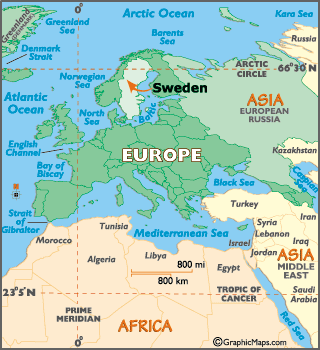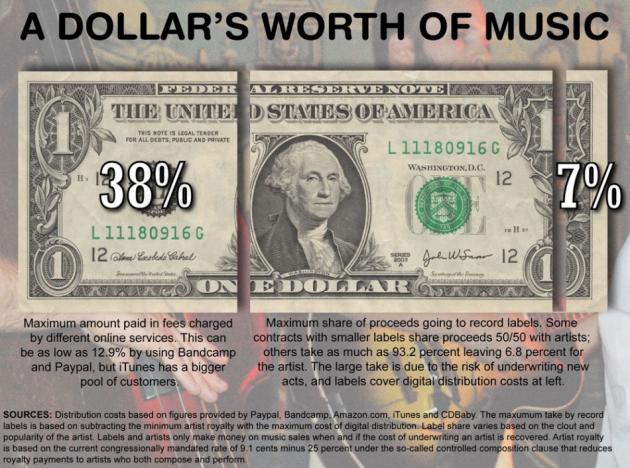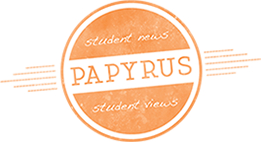Written by Austin Schumacher; Media by Zach Bonner.
So by now, I’m granting it as almost assured that everyone who might possibly be reading this has at least heard of this new giant that’s trying to take over your music-listening life. Having said that, I must admit that it seems to be doing quite an effective job and this author has personally succumbed to its promising whispers. If you have not heard of Spotify, I will grant a quick and dirty overview: set up similar to iTunes, Spotify allows subscribers to stream any one of the over 20 million songs. There are, however, three tiers of the Spotify experience depending on how much you want to pay ranging from FREE to $10 a month. The great question is….how does it all work? Spotify came raging into the scene in the U.S. like a blast of lighting, but there is some mystery as to how all the details work. It claims to be free and yet pay the artist? How does that work? Well, it’s time to do a little work and find out.

Spotify actually started in Sweden and took a bit of time before crossing the pond and coming to the United States where it made a HUGE splash the moment it arrived. Appearing as almost “too good to be true” for some, the program allowed music listeners to stream music for free legally. While some had been doing this illegally for some time, Spotify claimed that it was paying out money for each time a song is streamed. Shortly after its arrival, the company made a deal with Facebook that boosted the heck out of its previous clientele. Joining with one of the biggest “nations” in the world, Spotify’s exposure shot up like a rocket. With its popularity soaring as friends shared music with friends on the world’s largest social networking site, Spotify has continued to grow, and it is projected that they are setting up a browser-based app, which would allow users to access it even from a computer where it’s not installed, and have partnered with LG so that all their smart phones will come installed with a free trial of Spotify Premium.

Still, with all this growth and expansion, how legitimate is the business? While it claims to pay the artists, is this significant enough that it’s really worth it for them? Many artists have complained that there really isn’t much growth for them when it comes to putting songs on Spotify. One tweet from an artist claimed, “Spotify might be good exposure but after 10k plays we get approx 10 dollars.” So what’s the deal? Obviously, Spotify is making quite a bit of money from the paid accounts and advertisements, so where does it all go? Besides, they’ve been rated by Wall Street Journal to have a value of $3 billion total.
While it would appear that Spotify is certainly raking in quite a bit of funding, it might be more surprising to hear that it hasn’t turned a profit. Wait…..what?! How can you not turn a profit with that much money? Even with a projected income of $500 million, one must realize that $40 million of that is directly handed over in royalty payments to record labels.

The company claims that most of its income (about 70%) is paid back to the rights holders. In only three years, this number has grown itself somewhere to the tune of $500 million total (see what I did there?). As far as the individual artists are concerned, the amount that they are paid depends on their contribution to the total number of plays during that time period. As Spotify puts it, “we will pay out approximately 2% of our gross royalties for an artist whose music represents approximately 2% of what our users listen to.”
Some argue that this represents an even better way of getting paid for a song. As opposed to a customer paying for it once, an artist is paid every time the song is played. It shows a better representation. However, some may still be concerned with how little they are paid per song. In the end, it seems like the solution is get more plays. In addition, there have been those who have voiced a concern that Spotify is paying the record companies in royalties significantly more than the individual artist. Shouldn’t the artist receive that money? However, one must also consider that, without the labels, the music would not even be available. As far as indie artists are concerned, they are not cut out of the deal at all. Unlike iTunes, which lowers the amount that indie artists receive from the total price of the song, Spotfiy pays them in the same way they pay everyone else. In addition, it allows new upcoming artists to gain a good place for exposure into mainstream music stream.
So whether we like it or not, online streaming appears to be here to stay, and Spotify’s immense popularity has shown that. How artists and record companies adapt to that has yet to be seen in its fullest. I myself am a member of the Spotify crowd, and I must say that it has opened me up to many more bands and types of music than I would have found on my own. I certainly appreciate the amount of variety that they have both in types of music as well as size/popularity of bands. For example, there are even a few local, Greenville bands that can be found on there like To Every Cynic and Lloyd Nicks. Spotify has helped to shape what looks like a revolution in how we listen to music, and I for one am ready to jump on board.




























